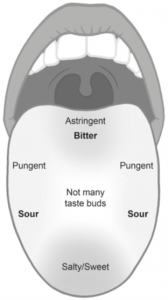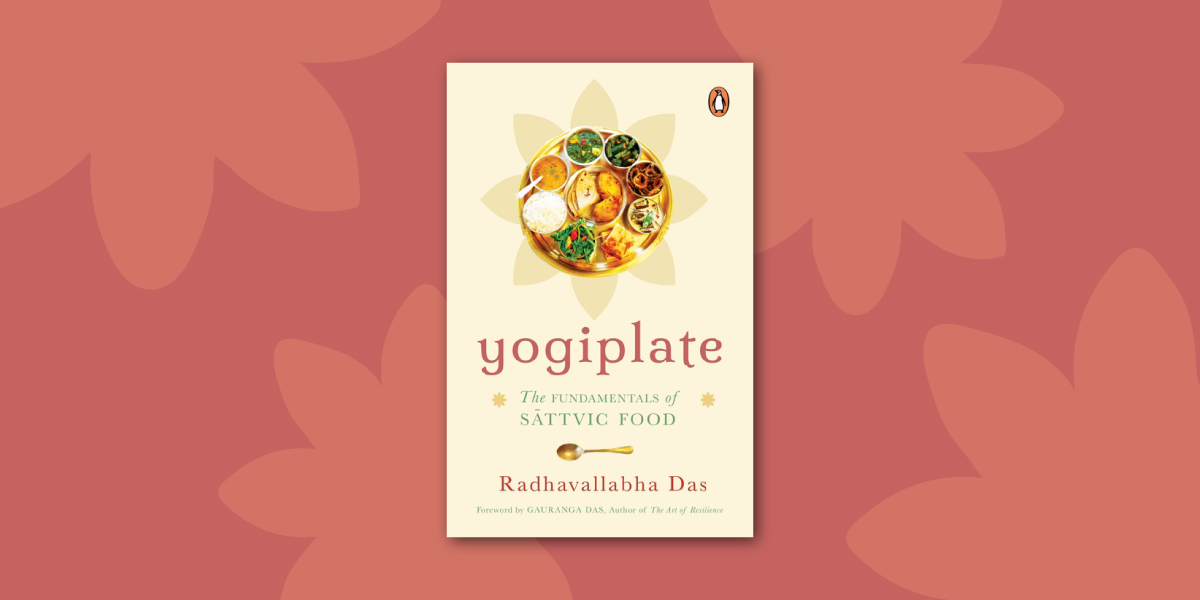Radhavallabha Das, author of Yogiplate, serves on a plate the science of Ayurveda through sāttvic cooking. Yogiplate is a guide which promises to inculcate pure Vedic traditions in us so we can eat well and also avoid the side effects of a modern lifestyle.
Here’s an excerpt from the book in which the author explores how from tasting ingredients, one can understand the impact on digestion, tridosa and health.
*

Rasa is an experience or something that inspires a particular mood, thus contributing to our feelings and manifests various sentiments, such as happiness, anger and frustration. When rasa flows into us, it quickly influences us by expanding into our body, senses, mind and heart. In the Bhagavad Gitā, Krishna says, ‘Of all the rasas, I am water.’ Water is neither sweet nor salty or sour. Water is just water, yet it carries a taste, and that is rasa. No drink can quench our thirst like water.
Pure, clean water is not only nourishing to the body but also touches and purifies our mind. Many Ayurvedic preceptors believe that all the rasas originate in water, as much as all colours are present in white colour. Rasa is roughly translated as taste in English, although it means much more. The word that corresponds to taste in Sanskrit is svādu and only partially represents rasa. Rasa is more sublime in its influence than taste. Without rasas, you would not be able to determine the essence of food.
What are the Six Rasas?
The six tastes are sweet, sour, salty, pungent, bitter and astringent. These tastes are detected by the taste buds on the tongue and transported by the water content in each ingredient. Different types of taste buds are spread throughout the tongue: the tip hosts both the sweet and salty taste buds, the sides of the front portion host the sour ones, the sides of the rear portion host the pungent ones, and the centre rear part (closer to the throat) hosts the astringent taste buds. The arrangements are illustrated in the figure.

Food with sweet or madhura taste is always welcome and forms the major portion of our diet. When I say sweet taste, it refers to all food with natural sugar, and need not be predominantly sweet to taste. For example, rice, corn and wheat have a natural mild sweetness. So do vegetables, such as pumpkin and potatoes. If we look at a typical meal, we will find these food ingredients form the predominant portion of the meal. As the nutrients from such food are essential to build tissues, sweet taste buds are at the front tip of the tongue to help easily detect such food.
Salt regulates the water content of the body and needs to be consumed in lesser quantities than food with a sweet taste. Salt is added to sweet-tasting food like fried potato chips. Too much salt leads to too much water in the body as salt attracts water through osmosis. Excess water causes obesity and blood pressure to rise. However, sodium from salt plays an important role in muscle contraction and nervous movement. An average adult needs around 6 gm of salt a day. So, we cannot remove it altogether from our diet.
While discussing the tridoṣa nature of food ingredients, we will talk about various other benefits of different types of salt. Foods with a sour taste, which mostly aid in digestion, need to be consumed in smaller doses than those with sweet taste. Even a slight increase in salty and sour taste can be unhealthy. Lemon juice, tamarind, raw mangoes, pomegranate, kokam and Indian gooseberries are some examples.
Pungent ingredients should be consumed in moderation. A few examples of pungent ingredients are chilli peppers, black pepper and ginger. These four tastes are loved universally. Although pungency may not be welcomed by all, many people love it. Some of the Thai, Indian and Mexican cuisines are loaded with chilli peppers.
Foods with bitter and astringent taste are not so welcome. But they act as essential cleansing agents. Cleansing agents are required in small doses, and the buds that recognize these tastes are situated at the back of the tongue (near the throat). By the time one can register these tastes, which may be a bit unpleasant to some, it is too late to reject it, and we gulp it down like medicine. Medicines are essential but cannot be part of our main diet. The buds for the sour and salty taste, which is less prevalent in our diet than sweet taste, but more than bitter or astringent, are on the sides of our tongue. All these taste buds get activated when all tastes are present in our diet and thus promote digestion to the fullest. Therefore, Ayurveda recommends that all the tastes should be part of our meal. The ingredients with a sweet taste should form the biggest portion, followed by salty, sour, pungent, bitter and astringent. The order of eating should also follow from sweet to astringent taste. Because sweet taste comprises earth and water elements, it is heavy to digest and thus should be consumed in the beginning when hunger is the most extreme. Sweet taste generally comes with salty and sour taste and forms the first part of our meals. Pungent, bitter and astringent are easier to digest and should be eaten towards the later part of the meal.







